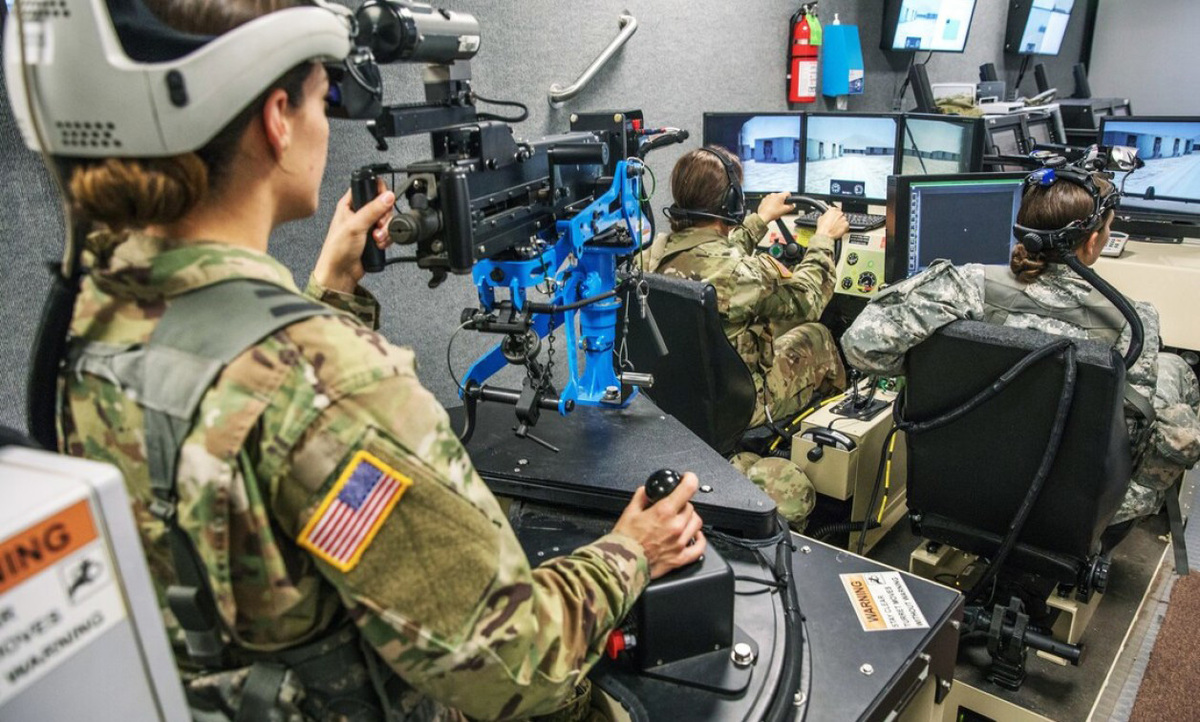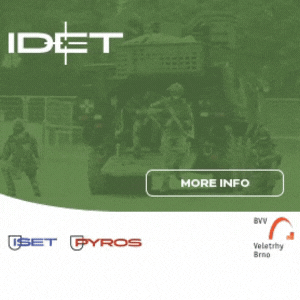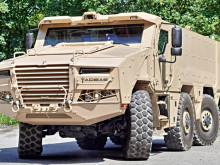Artificial Intelligence in combat simulations: How AI is changing NATO and Czech Army soldier training
Artificial Intelligence (AI) is beginning to significantly influence the methodology of military training within NATO and the Czech Army. Advanced combat simulations using machine learning and neural networks offer an unprecedented level of realism and efficiency in training. Experts agree that implementing AI into training programs can lead to a significant increase in training effectiveness and potential cost reductions.

Evolution of military training
The evolution of military training has undergone several paradigm shifts – from traditional field exercises to computer-assisted simulations to current experiments with AI-augmented virtual realities. With the exponential growth in computing power and advances in machine learning, the disconnect between the simulated and real battlefield is becoming increasingly diffuse. NATO and its member states, including the Czech Republic, are allocating significant resources to the development and implementation of AI-enabled simulation systems, anticipating revolutionary changes in military training and operational effectiveness.
Technological foundations of AI in combat simulations
Machine learning and deep learningAdvanced machine learning algorithms, particularly deep neural networks (DNNs) and convolutional neural networks (CNNs), form the core of modern combat simulations. These systems use sophisticated big data processing techniques to analyze petabytes (10^15) of information from previous conflicts, exercises, and intelligence sources. These models use advanced techniques such as knowledge transfer from one domain to another (transfer learning) and learning based on environmental feedback (reinforcement learning). As a result, they achieve extremely high accuracy in predicting how units will behave and how complex combat situations will evolve.
Neurocognitive architectures
By combining different types of artificial intelligence systems, advanced computer models are created that can mimic the complex thought processes of humans and entire military units. These systems combine traditional rule-driven procedures with modern learning methods inspired by the workings of the human brain. As a result, they can simulate important military skills such as the ability to quickly assess the battlefield situation, plan strategically, and adapt to uncertain conditions. These models allow soldiers to practice decision-making in realistic but safe virtual scenarios that faithfully replicate real combat situations.
Natural Language Processing (NLP) and multimodal interaction
Today's human speech processing and understanding systems (NLP systems) use advanced technologies that allow them to analyze and generate text at a level comparable to human experts in military communications. These systems are based on models that can efficiently process complex linguistic structures and simultaneously pay attention to different parts of the text. To create the most realistic training environment, these language systems are combined with other technologies such as computer vision (for interpreting visual information) and haptic feedback (for simulating physical sensations). This fusion of different technologies, called multimodal interaction interfaces, allows soldiers to communicate by voice, respond to visual stimuli, and simultaneously sense the physical aspects of the simulated environment, creating a highly realistic training environment.
Computer vision and augmented reality
State-of-the-art computer vision technologies allow simulations to accurately recognize and distinguish individual objects in an image and understand three-dimensional space in a manner similar to the human eye. These technologies, combined with advanced augmented reality (AR) systems that overlay digital elements over real-world imagery, create extremely faithful simulations of the combat environment. These systems react so quickly that the delay between action and reaction is imperceptible to the human eye (less than a thousandth of a second), providing a visual quality that is very close to what the human eye sees in the real world
Application of AI in complex aspects of military training
Tactical and operational training
Artificial intelligence systems are able to create and continuously modify a variety of training scenarios that change in real time based on how trainees act. These systems use advanced techniques to automatically generate content and "compete" AI models against each other, allowing them to create a virtually unlimited number of unique and highly complex training situations. This allows soldiers to experience new and unexpected challenges each time, significantly increasing the effectiveness of their preparation for real combat situations.
Strategic planning and wargaming
Advanced AI systems for strategic planning combine different methods to predict and model long-term geopolitical and strategic scenarios. In doing so, they use principles from game theory (which studies strategic decision-making), learning from multi-actor interactions, and probabilistic models. As a result, these systems can simulate complex relationships and interactions between different countries, non-state organizations, economic systems, and geopolitical factors. This allows military strategists to better understand and prepare for possible future developments in global politics and security.
Logistics and supply chain management
In the field of logistics training, artificial intelligence uses highly advanced methods to solve complex problems. These methods are inspired by the principles of quantum physics and include techniques for finding the best solution among a huge number of possibilities. Such approaches are much more efficient and flexible than traditional methods. AI systems can find the best way to organize complex logistic networks in real time, even when they involve millions of different variables and conditions that are constantly changing. This allows soldiers to train to manage supply and movement in extremely complex and dynamic situations.
CBRN Scenario Simulation and Crisis Management
Simulations of scenarios involving chemical, biological, radiological, or nuclear (CBRN) threats have been improved using artificial intelligence. These advanced simulations combine accurate scientific models of how dangerous substances or radiation spread with models predicting how humans would react in such situations. AI allows these systems to predict very accurately how a CBRN incident could gradually affect critical infrastructure (such as power plants, hospitals, or transport networks) and society as a whole. This allows soldiers and crisis teams to train responses to these extremely dangerous situations in a safe but very realistic virtual environment.
Benefits and challenges of implementing AI in combat simulations
Introducing AI into training programs brings significant benefits. It enables soldiers to learn faster, think more flexibly, and adapt better to new situations. AI-enabled simulations also allow emerging threats to be quickly incorporated into training scenarios, ensuring that training remains relevant given the changing nature of the modern battlefield.
Along with these benefits, however, significant challenges emerge. Fundamental is the issue of data reliability and the removal of bias in AI systems. Even small errors in input data can lead to large variations in simulation results. Another key challenge is the cyber resilience of these systems, as advanced cyber attacks could compromise the integrity of training programs.
The ethical implications of using AI in military training are the subject of intense debate. The main dilemma is how to balance the use of advanced technologies while preserving basic human decision-making skills. There is also the risk that soldiers may become overly dependent on AI systems, which could make them vulnerable in the event of the failure of these systems or hostile intervention.
Geopolitical implications and future trajectories
The uneven uptake of AI technologies in the military can significantly change the global security landscape. Differences in how different countries use AI in their militaries may lead to new forms of strategic instability and potentially start a new arms race, this time focused on AI technologies.
In order to effectively address these complex challenges, it is essential to establish strong international cooperation in the research, development, and ethical management of AI systems for military purposes. At the same time, it is important to continuously assess and adjust the balance between AI-assisted training and traditional methods. This will ensure the best possible combination of advanced technologies and basic military skills.
Conclusion
The introduction of artificial intelligence into combat simulations therefore represents a fundamental change in military training that has a profound impact on the effectiveness of operations and strategic planning. Current developments demonstrate the enormous potential of these technologies, but also highlight the urgent need to address the ethical, technical, and strategic challenges associated with them.
The future of military training will undoubtedly be characterized by continuous developments at the interface between human expertise and artificial intelligence. Finding the best possible link between these two areas will be a key factor in ensuring that NATO and the Czech Army are adequately prepared for the complex challenges of the 21st century.



















